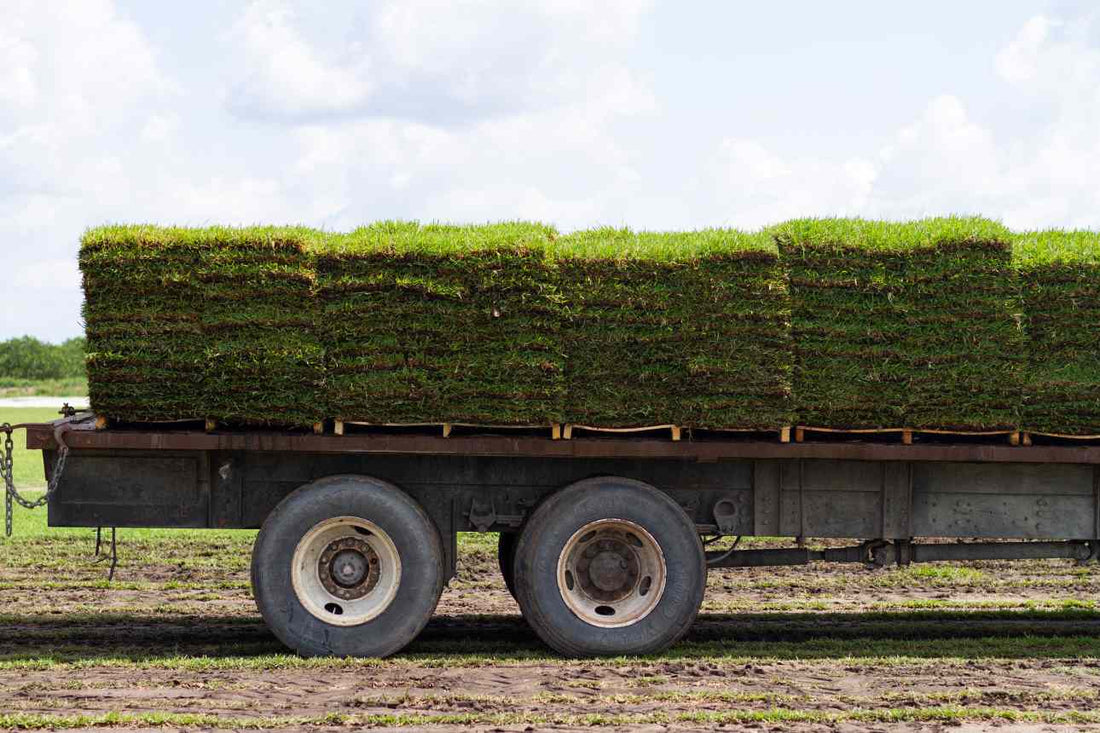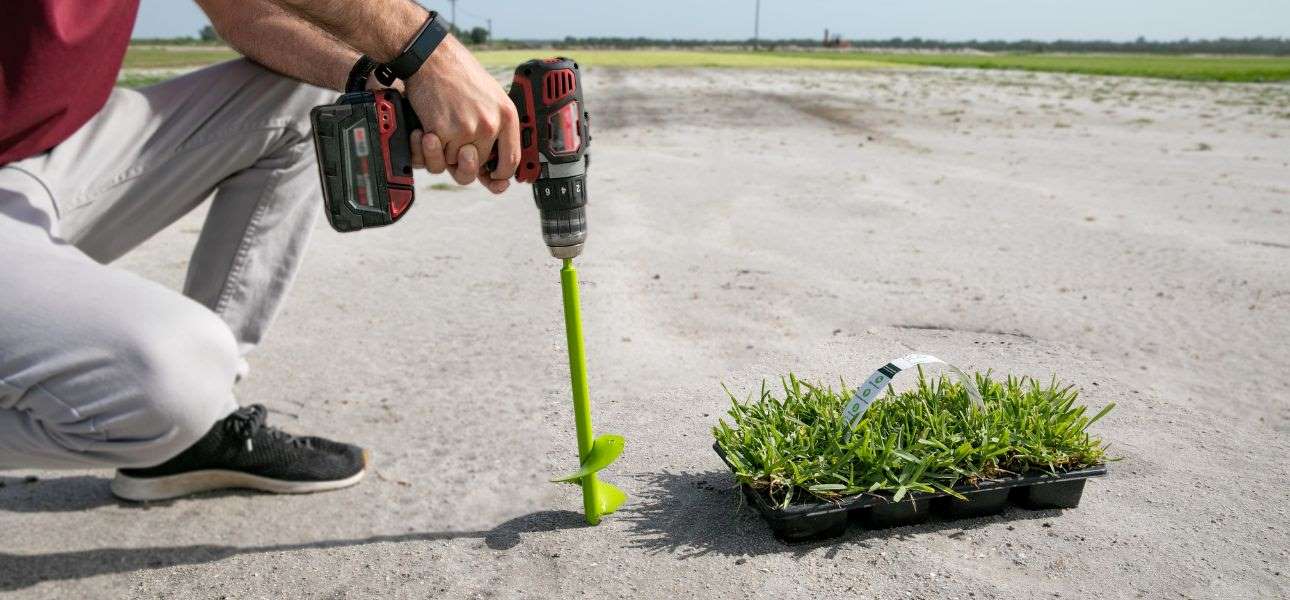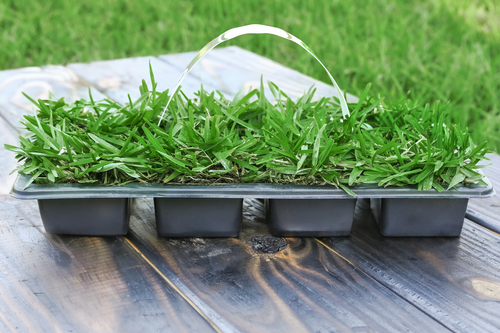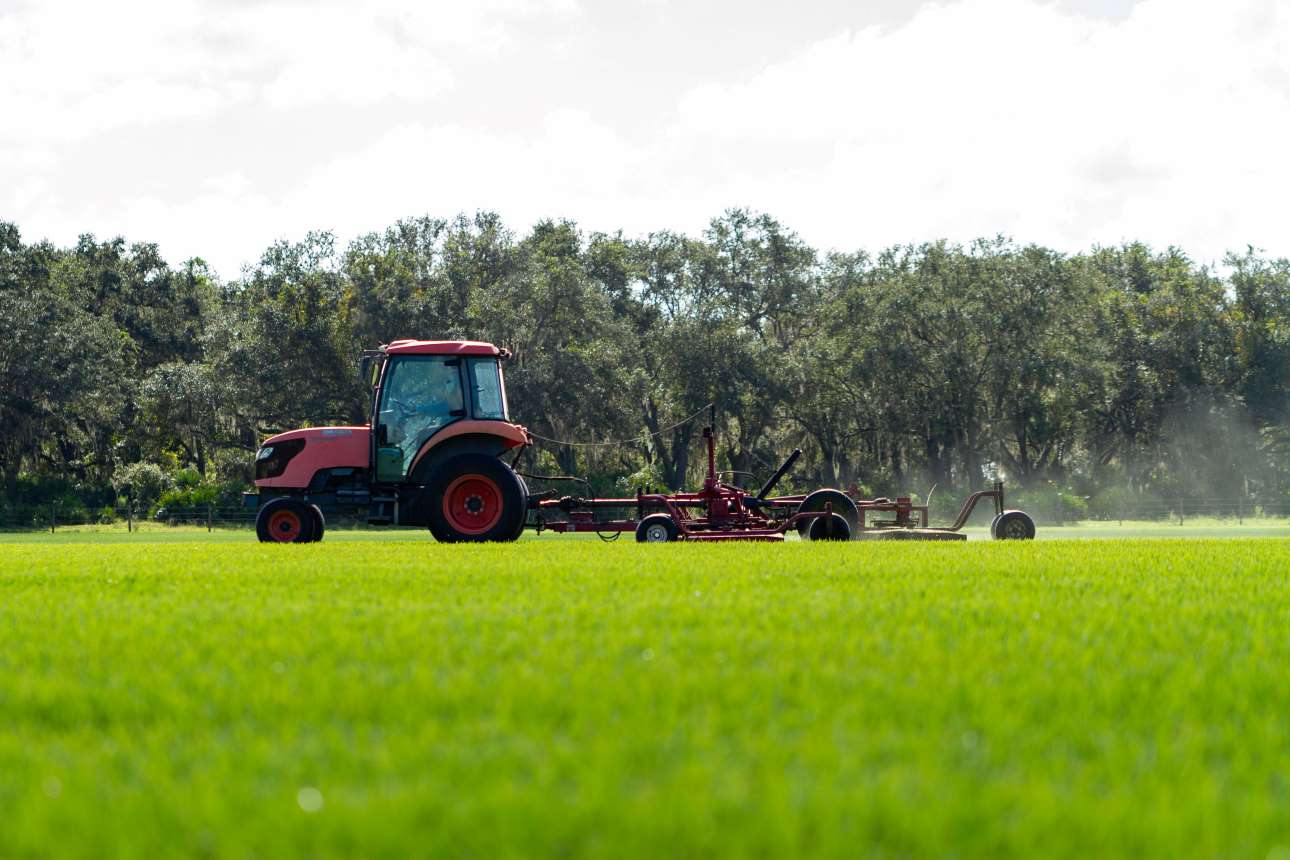
Sod vs. Plugs: Which One is For You?
Jamie TedderA lush, green grass expanse can add to any home's aesthetic appeal. However, maintaining its health can be challenging over time due to factors like environmental conditions and poor maintenance practices. When it's time to restore your lawn, you can plant grass plugs or install sod to re-establish or repair damaged areas seamlessly.
Sod and Grass Plugs: An Overview
Sod and grass plugs are two effective methods for establishing a new lawn or repairing damaged areas in an existing lawn. Unlike seed—which requires more time to germinate and grow into mature plants—sod and grass plugs are already mature plants. They offer several advantages, such as faster establishment. Whereas sod provides an almost instant green cover, grass plugs quickly spread to fill in bare spots.
Additionally, sod and grass plugs require less watering than seed because their root systems are more developed and can access water more effectively. This not only saves water but also reduces the risk of soil erosion or seed washout in heavy wind or rain. These lawn care solutions also reduce the risk of weed growth compared to seed. Their dense coverage leaves little space for weeds to take root, resulting in a healthier, more weed-resistant lawn.
Moreover, certain types of warm-season grasses, particularly improved varieties like BIMINI® Bermudagrass, are more likely to succeed when planted as grass plugs or sod. Overall, the maturity of sod and grass plugs translates to a higher success rate for establishing a healthy, green lawn.

Which is Better: Sod or Grass Plugs?
Several factors should be considered when deciding between sod and grass plugs. For example, if you're dealing with a large area for renovation or looking to establish a new lawn quickly, sod is generally the better option. Meanwhile, grass plugs may be more practical if you're addressing small areas of damage or looking to save on costs while accepting a slightly longer establishment period.
These considerations are crucial when choosing between sod and grass plugs and should guide your decision-making process.
Coverage
A key consideration when deciding between sod and grass plugs is the size of the area you need to address. Sod is recommended for establishing a new lawn or renovating a large area, as it provides instant coverage. Meanwhile, grass plugs may be more suitable if you only have a few bare spots or small damaged areas, often due to shade, pests, or diseases.
Budget
Your choice between sod and grass plugs will also depend significantly on your budget. Sod is generally more expensive, with prices starting around $479 for 400 square feet of pallet. On the other hand, grass plugs are more budget-friendly, starting at around $44 for a 16-pack, which can cover approximately 36 square feet, depending on the spacing.
However, remember that these prices can vary based on the grass variety. Improved varieties like BIMINI® Bermuda are also more expensive but offer higher-quality grass with greater tolerance to environmental stress. Similarly, CitraBlue® St. Augustine grass plugs are pricier than the more common Seville variety.

Grass Variety
When selecting a grass variety, it's crucial to consider your local climate. In regions with warm and humid climates like Florida, warm-season grasses such as Bermuda, St. Augustine, and Zoysia are more likely to thrive. These grasses are well-adapted to heat and humidity and have heightened drought tolerance.
Warm-season grasses are often better planted as sod or plugs rather than from seed. This is because warm-season grasses generally have slower germination rates from seed than cool-season grasses. Planting sod or plugs provides a quicker way to establish a lawn with these grass types, offering more immediate results and faster coverage.
Commitment
Both sod installation and grass plugging methods require soil preparation, including tasks like weed control, aerating, and dethatching, all of which should be completed before installation. Installing sod involves strategically laying out pieces of sod, which can be labor-intensive. Sod has a limited shelf life after harvest, approximately two days, and has to be planted immediately, thus adding time sensitivity to the project.
On the other hand, installing grass plugs involves drilling holes into the soil for planting, often using a grass plug tool like the SodPod® Power Planter, which can be equally time-consuming. The amount of time and labor involved in each method should be considered when deciding between sod and plugs, whether you plan to do it yourself or hire someone to do it for you.
Establishment Period
If you're looking for almost instant results, installing sod is the better option. However, remember that while sod provides a superficially established lawn appearance, it takes about 30 days to grow fully into the soil. During this period, ensure to avoid foot traffic to prevent further stress on the newly laid sod. But, even with this consideration, sod still takes significantly less time than waiting for plugs to grow in.
On the other hand, while plugs establish faster than seeds, they can take some time to fill in your lawn, especially if you're plugging an entire lawn. You can expedite the process by using faster-growing varieties like Bermuda grass plugs and supplementing your new grass with NutriPod®, a slow-release lawn fertilizer designed to support newly established grass and promote healthier root growth.

Takeaway
In summary, the choice between sod and grass plugs for your lawn should be based on factors like the coverage area, budget, and grass variety. Moreover, weighing factors like the amount of time and effort you're willing to put into lawn care and whether you desire instant results should determine the best option for your lawn maintenance needs.
For sod installation, read here for tips on measuring how much sod you need. To learn more about grass plugging, read here for the 7 easy steps to start a lawn with grass plugs.
Bethel Farms is a leading sod farm in Central Florida, providing a wide range of lawn care solutions, including high-quality sod and SodPods® grass plugs. Visit our website to learn more.

